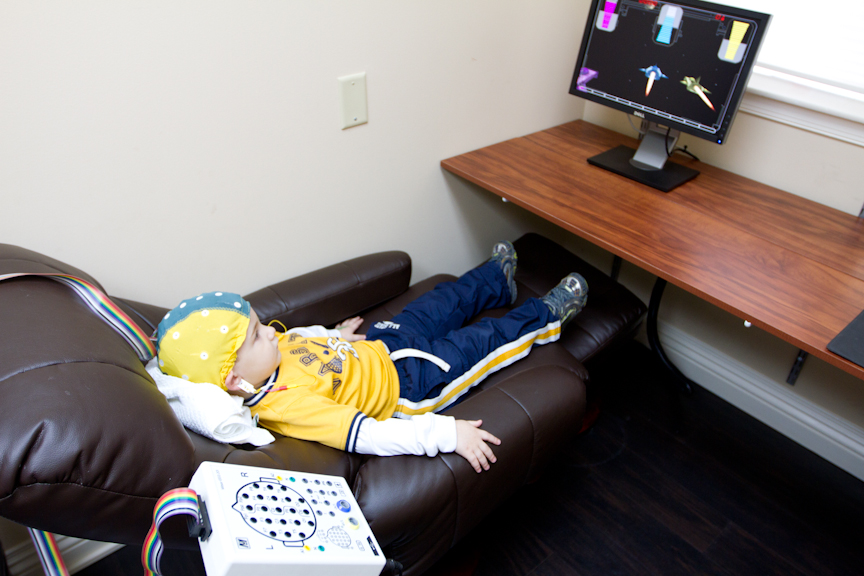Neurofeedback is an intervention used in Autism Spectrum Disorder aimed at training individuals to better regulate the biological functioning of their own brains, leading to reduction in symptoms and functional improvement.
Multiple Brain Areas Affected
Research has shown that symptoms of ASD are the result of brain dysfunction within multiple areas in the brain. These findings have been documented with neuroimaging and electroencephalography (EEG) testing in individuals suffering from ASD. Results have shown neurologic problems to be related to abnormal neural connectivity problems, displaying both excessively high connectivity as well as deficiency in connectivity. Some areas of the brain are in “hyper-communication mode,” while other areas fail to communicate normally. Studies using neurofeedback and QEEG began in the 1990’s.
Jonathan Cowan, PhD and Lisette Markham, M.A. were the first to submit a documented study with positive outcome to the Annual Meeting of the Association for Applied Psychophysiology and Biofeedback in 1994. Many studies have followed over the ensuing years, further establishing the therapy as an important facet in treating the multiple symptoms associated with Autism Spectrum Disorder.
Connectivity Guided Therapy (QEEG)
Neurofeedback is essentially brain exercise. Through the use of sensors, applied externally over various regions about the scalp, brain activity can be measured. This is also known as Connectivity Guided Therapy or Quantitative Electroencephalography (QEEG). With QEEG, a computer processes brain waves and the clinician is able to interpret which areas of the brain are either over or under – stimulated, in turn tailoring neurofeedback exercises accordingly for each individual. The patient learns to enhance desirable EEG frequencies and to suppress undesirable frequencies at selected locations in the brain. Adjustments in therapy are made as progress is attained and the brain begins to be able to self-regulate. Selfregulation is necessary for optimal brain function, emotional control and physiologic stability.
A typical course of EEG biofeedback therapy involves 20 half hour sessions, administered over a six to twelve week period of time. Neurofeedback and QEEG are well-established, non-pharmacologic and non-invasive therapeutic modalities for ASD with documented effectiveness and minimal adverse effects. Results of Neurofeedback are maintained over time and do not reverse after treatment is withdrawn.
Getting My QEEG social story (Click for instructions about the QEEG Therapy)

